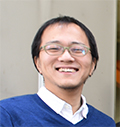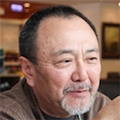Newsletter 2019.2 Index
Theme : "Mechanical Engineering Congress, 2018 Japan (MECJ-18)"
|
Biomimetic consideration of means to catch fluid forces
Yoshihiro KUBOTA
Osamu MOCHIZUKI |
Abstract
Two big companies of East Europe provide canoes for competitive use. The canoeing athletes have had to choose one of them. However, it is hard to use either for Japanese athletes because of mismatch between their build and the canoe. For supporting them by means of engineering, a new style canoe is necessary to be designed from a point of views of fluid dynamics, biomimetics and human engineering toward the 2020 Tokyo Olympic games. There are targets of this project: to use fluid forces to make up to them for less power, to reduce drag by biomimetics and fluid dynamics, and to fit the body to the canoe. The process to make it real in three years until 2020 is as follows: 1) to design a concept canoe by only engineering consideration, 2) to know the advantage, 3) to fill the gap by feedback from the impression of canoeists, 4) to redesign it for the actual competitions, 5) to check the functions so that the concepts work, and finally 6) to complete the practical canoe with excellent performance in accordance with our concept.
Key words
bio-mimetics, design, canoe, unsteady flow, harmony
Figures

Fig. 1 Japan made canoe “MITSUHA”



